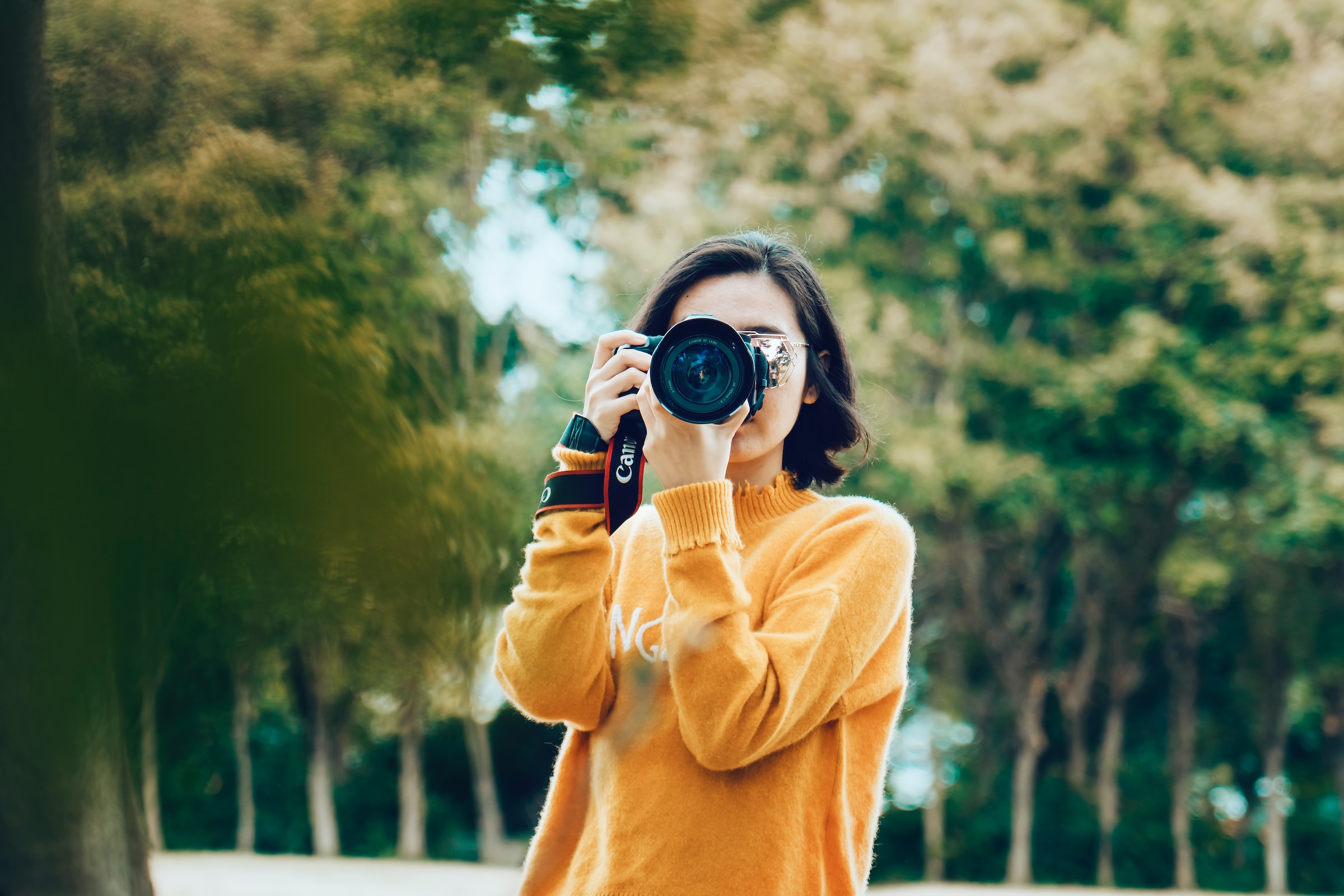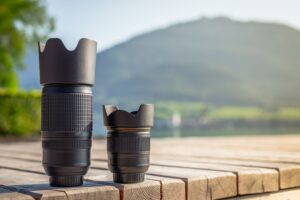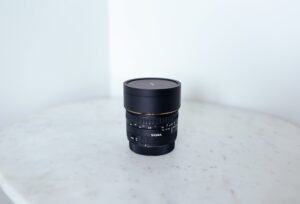Should I upgrade my camera body or lens? It’s a question that many photographers, both amateurs and professionals alike, ask at some point.
While both upgrades can significantly enhance your photography, the lens often has a more immediate impact on image quality.
However, the decision isn’t always straightforward.
In this article, we’ll explore the differences of both options, helping you make an informed choice based on your photography needs and goals.
Here’s what we’ll cover:
- The fundamental differences between camera bodies and lenses.
- How each upgrade affects image quality.
- Recognizing when it’s time for an upgrade.
- The artistic and technical impacts of lenses.
- The broader implications of a camera body upgrade.
Understanding the Basics
What’s the Difference Between Upgrading a Camera Body and a Lens?
Upgrading your camera body typically means getting a new camera with improved sensor technology, better processing capabilities, and often, enhanced features like improved autofocus or in-body stabilization.
On the other hand, upgrading your lens can mean sharper images, better low-light performance, and the ability to achieve specific artistic effects like creamy bokeh.
How Do Camera Body and Lens Upgrades Impact Image Quality?
A camera body upgrade often comes with a better sensor, which can capture more detail and perform better in low light.
However, even the best sensor can be limited by a subpar lens.
A high-quality lens can dramatically improve sharpness and clarity.
Lenses with wider apertures (like f/1.8 or f/1.4) allow more light in, which is especially beneficial in low-light conditions.
For a deeper understanding of how lenses influence image quality, check out our article on how camera lenses work.
Lens vs. Camera: Image Quality Showdown
| Aspect | Camera Body Impact | Lens Impact |
|---|---|---|
| Sharpness | Improved sensor can capture more detail | Higher quality glass and construction lead to clearer images |
| Low-Light Performance | Better sensors handle noise more effectively | Wider apertures allow more light, reducing the need for high ISO |
| Color Accuracy | Advanced sensors can reproduce colors more faithfully | Lens coatings can reduce flares and improve color rendition |
| Autofocus | Newer cameras often have faster and more accurate AF systems | Some lenses focus faster and more silently than others |
Assessing Your Needs
Recognizing the Signs You Need an Upgrade
Every photographer reaches a point where they question the capabilities of their gear.
If your photos consistently lack sharpness despite using proper techniques, it might be a sign that your lens is the culprit.
On the other hand, if you find yourself struggling with autofocus during crucial moments, it could be an indication that either your camera body or lens is lagging.
Noisy or grainy photos in dim conditions often point towards a camera body limitation.
Moreover, if you’re feeling restricted in your artistic expression, especially when trying to achieve effects like a blurred background, it might be time to consider a lens with a wider aperture.
How to Determine if Your Lens is Limiting Your Photography
The lens is often described as the eye of your camera. If it’s not delivering, your images will reflect that.
Chromatic aberration, for instance, can be identified by purple or green fringes around objects, degrading image quality.
Vignetting, or dark corners in your photos, especially at wide apertures, is another sign of lens limitations.
If your photos show straight lines appearing curved, it’s a clear indication of lens distortion.
And while lens flare can sometimes be used artistically, unwanted flare can ruin a shot.
Quality lenses often have superior coatings to minimize this.
For a deeper understanding and solutions to these lens limitations, our article on fixing camera lenses is a valuable resource.
The Role of the Camera Body in Focusing Speed and Tracking Performance
The camera body isn’t just a vessel for the lens; it plays a key role, especially when it comes to autofocus performance.
This is particularly true for genres like action or wildlife photography.
Newer camera bodies often come equipped with more autofocus points, enhancing tracking and composition flexibility.
The speed of the processor in the camera can also play a significant role in improving autofocus speed and accuracy.
Furthermore, advanced camera bodies offer customization options, allowing photographers to tailor autofocus behavior to specific scenarios.
Diving Deeper into Lenses
The Artistic Impact of a Lens on an Image
Lenses shape the artistic essence of photos.
For instance, a lens with a wide aperture can create a shallow depth of field, beautifully isolating subjects from the background.
This effect is particularly favorable in portrait photography.
Understanding Bokeh and Its Relationship with Lenses
Bokeh, a term derived from Japanese, refers to the “blur” or “haze” in out-of-focus areas of an image.
But it’s not just the presence of blur; it’s the quality of that blur that matters.
Some lenses, due to their construction and aperture blade shape, produce a creamy, smooth bokeh, while others might render it more harshly.
Achieving the desired bokeh often requires a combination of a wide aperture and a longer focal length.
Benefits of Investing in a High-Quality Lens
Investing in a top-tier lens can be transformative for a photographer.
Such lenses are not only durable, often boasting robust construction, but they also offer optical excellence, minimizing flaws and delivering impeccable image quality.
Additionally, some high-end lenses come with features like image stabilization, making them versatile across various shooting scenarios.
Camera Body Considerations
When we talk about the camera body, we’re referring to the heart of your photography setup.
It’s where all the magic happens, from capturing light to processing the image.
Upgrading your camera body can mean a leap in sensor technology, improved processing capabilities, and a host of enhanced features like better autofocus or in-body stabilization.
How a Camera Body Upgrade Impacts the Overall Photography Experience
A new camera body doesn’t just offer better image quality. It can transform the entire process of taking photos.
Newer models often come with intuitive controls, touchscreens, and customizable buttons that make shooting a breeze.
Additionally, features like extended battery life are invaluable for those long shooting sessions or travel photography adventures.
Technical Considerations for Camera Body Upgrades
Modern sensors in newer camera bodies can offer better dynamic range, color accuracy, and noise reduction. But it’s not just about the sensor.
Before making an upgrade, ensure that your existing lenses and accessories are compatible with the new body. For instance, using an APS-C lens on a full-frame camera can present challenges, so it’s essential to be informed.
Recommendations and Final Thoughts
Your photography style and genre play a significant role in determining which upgrade will benefit you the most.
Portrait photographers might find a lens with a wide aperture to be invaluable for achieving that dreamy bokeh effect.
In contrast, landscape photographers might prioritize a camera body with a high dynamic range to capture every detail in shadows and highlights.
Sports and wildlife photographers, with their need to capture fast-moving subjects, might prioritize a camera body known for its rapid autofocus and high burst rates over a new lens.
But beyond the technical aspects, there’s the question of return on investment.
Photography gear isn’t cheap, and it’s essential to ensure that any upgrade genuinely enhances your work.
A quality lens can last decades, often outlasting several camera bodies. On the other hand, camera bodies can become obsolete faster due to rapid technological advancements.
Every photographer will face gear limitations at some point.
Whether it’s lens distortion, chromatic aberration, or slow autofocus, the key is to recognize these limitations and address them.
Sometimes, the solution might be as simple as post-processing fixes, while other times, an upgrade might be in order.
FAQs
Which holds more significance: the camera body or the lens?
The lens often has a more immediate impact on image quality, but the camera body determines features and overall functionality.
Which should be prioritized for an upgrade: camera or lens?
Typically, upgrading the lens can lead to a noticeable improvement in image quality, but it depends on individual needs and existing equipment.
At what point should I consider upgrading my DSLR body?
Consider upgrading your DSLR body when you start feeling limited by its features, or newer models offer significant advancements beneficial to your photography style.
Is it a good idea to invest in a camera upgrade?
Yes, especially if your current camera is outdated or lacks essential features that can enhance your photography experience and outcomes.
When is the right time to think about a lens upgrade?
Upgrade your lens when you seek specific artistic effects, better image quality, or when your current lens becomes a limiting factor in your photography.
Conclusion
Deciding between upgrading your camera body or lens is a choice which is often influenced by your photography style, needs, and budget.
While a new lens can drastically improve image quality, the right camera body can elevate your entire shooting experience.
Whatever you choose, ensure it aligns with your artistic vision and pushes your photography to new heights.








![Read more about the article How to Store Camera Lenses Properly for Longevity and Performance [2023]](https://photographyexplorer.com/wp-content/uploads/2023/08/How-to-Store-Camera-Lenses-Properly-300x200.jpg)
Pingback: The Best Lens for Moon Photography in 2023 - Photography Explorer